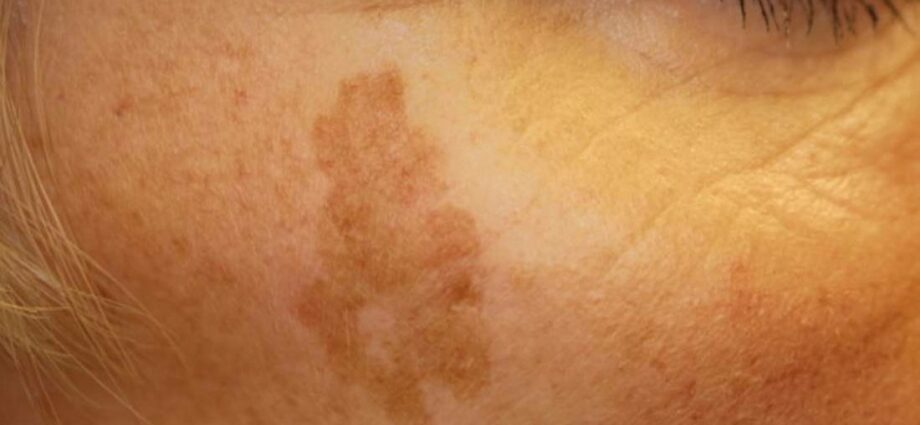With age, age spots may appear on the skin. Most often they occur in women over 45, sunbathers are threatened with hyperpigmentation after 30. However, the sun is not always to blame, sometimes the reason is hormonal failure, dysfunction of internal organs.
July 8 2018
Melanin is responsible for skin color, it is produced by melanocytes located in the basal layer of the epidermis. The more pigment, the deeper it lies, the darker we are. Pigmented spots are areas of excessive accumulation of melanin as a result of impaired synthesis of a substance or sunburn. For people over 30, hyperpigmentation is natural, as the number of melanocytes decreases over the years.
There are several types of age spots. Among the acquired, the most common are chloasma, brown in color with clear boundaries, they do not rise above the skin and are most often located on the face. Lentigines are of a darker color, slightly raised above the surface of the epidermis, localized in any areas. Each new darkening must be examined, with the slightest suspicion – consult a doctor.
Step 1. Examine the darkened area, remember what preceded the appearance. Age-related change or the consequence of sunbathing will have a uniform color, clear boundaries. Itching, itching, noticeably rises above the skin – alarming signs. The location is also important: pigmentation in closed areas, for example, on the stomach and back, rather indicates a malfunction in the work of internal organs. If at first glance the stain does not cause suspicion, it is worth checking periodically to see if it changes shape and color.
Step 2. Make an appointment with a dermatologist to find out the cause. Hyperpigmentation occurs, among other things, due to the use of products with aggressive acids, after procedures that injure the skin. Makeup also provokes the appearance if you apply it before going to the beach, especially perfume. Other common causes are hormonal medications, lack of vitamin C, and UV allergy. If there is any doubt about the benign nature of the spot, you should consult a dermatologist-oncologist. In this case, a biopsy will be done to rule out cancer.
Step 3. Take a comprehensive examination. After the oncologist has ruled out cancer, the dermatologist will refer you to a gynecologist, gastroenterologist, endocrinologist and neurologist for consultation. Melanin synthesis can be disrupted due to dysfunction of the ovaries or thyroid gland, insufficient enzymatic activity of the liver, problems with the immune and nervous systems, gastrointestinal tract, kidneys. Melanosis often affects women during pregnancy, while taking contraceptives and during menopause. It’s all about hormonal disruption, due to which the production of the amino acid tyrosine, which is involved in synthesis, decreases. After eliminating the cause, age spots begin to lighten and gradually disappear.
Step 4. Remove stains if age-related. Cosmetology procedures (laser, acid peels and mesotherapy) and professional remedies with arbutin, kojic or ascorbic acid will come to the rescue – they reduce the production of melanin. They can only be purchased at pharmacies and only after consulting a dermatologist.
Step 5. Take preventive measures. Eat fruits and vegetables rich in vitamin C – black currants, sea buckthorn, bell peppers, Brussels sprouts and cauliflower, kiwi. Starting from May, use creams with a UV filter of at least 30, even in the city. Sunbathe in doses, this rule also applies to tanning salons. Check the spots regularly and track changes. It is necessary to be examined by specialists at least once every three years, after 45 years – more often.










